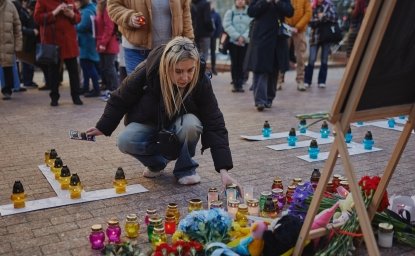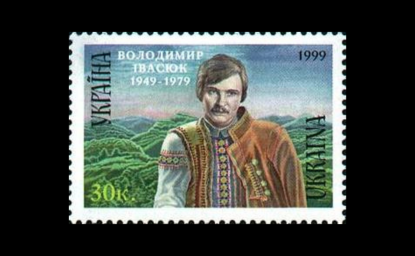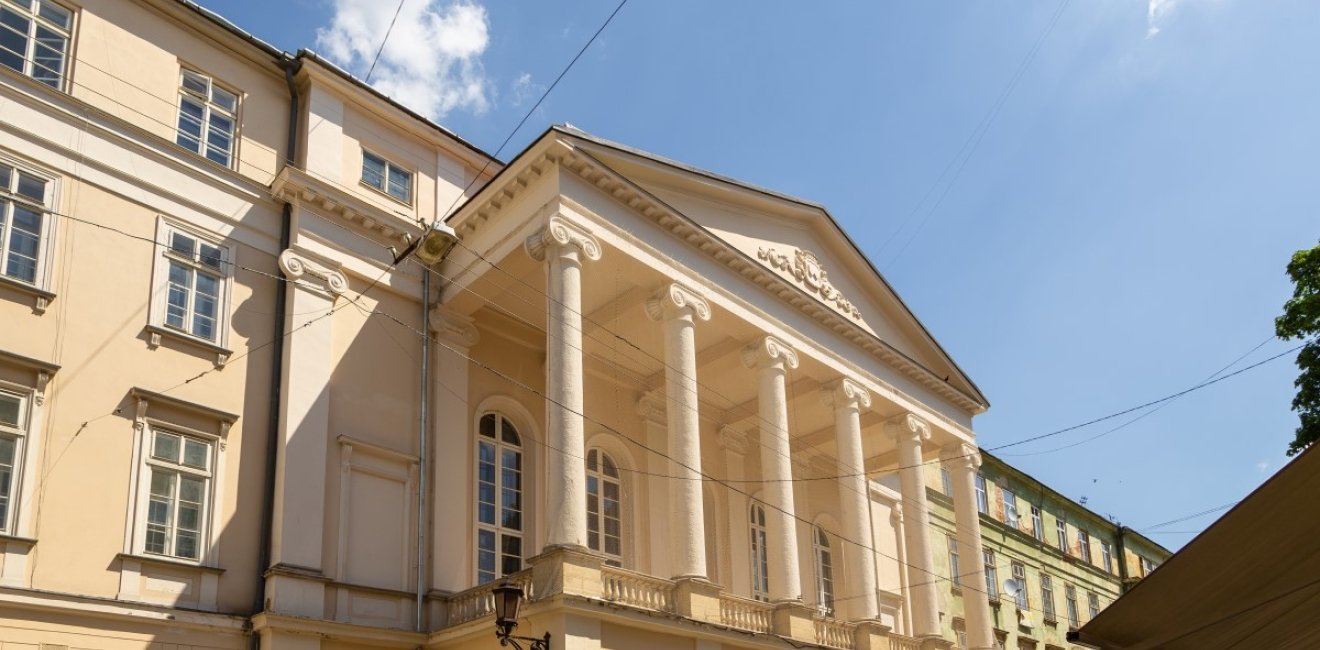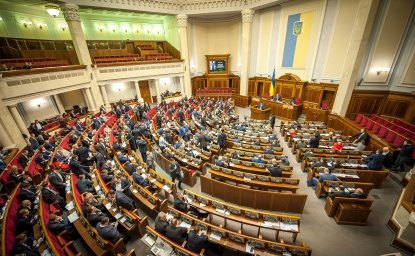
A blog of the Kennan Institute
On February 17, Lviv’s prestigious Maria Zankovetska Theater presented the premier of a new work about Ukraine’s current war with Russia: Iryna Feofanova’s Tube (Tiubik). The two-performer play, featuring well-known actors Yulia Mykhailiuk-Korzhuk and Vasyl Korzhuk, tells the story of the war from a unique angle—that of a draft dodger.
Yevgeny, now in his forties, is doing all he can to avoid fighting in any war, especially the present one. He concocts any number of reasons why he should not serve in the army: he will become the father of three children, he has a disability, he is enrolling as a student again. On top of it all his wife, Lyudmila, is approaching retirement.
When no ruse proves practical, Yevgeny decides to hide from authorities in a closet, the trunk of a car, and even under the kitchen table. He nonetheless yearns for a Ukrainian victory and despairs over a potentially tarnished and defeated Ukraine. Yevgeny and Lyudmila run through all the possible ways to avoid conscription. In the end, they confront the truth: Yevgeny engages in ruses and hides because he is afraid of dying.
Reflecting on the current moment, the play sends an unexpected message at a time of heroic sacrifices for Ukraine’s future. Heroes, it reveals, are made, not born. Some can become heroes, but not everyone can. This is a time when fate demands too much of average Ukrainians. But people are not simply malleable material that can be squeezed into whatever role a situation calls for.
Feofanova, who was born in 1985, has emerged as an important voice for a generation that grew up after Ukrainian independence. A native of Kyiv, she earned a degree in psychology before turning to television journalism. Her career accelerated as she prepared more than twenty scripts for television films and series, including documentaries and reality shows.
Everything changed after February 24, 2022, and her husband joined Ukraine’s military to fight the invading Russians. Maria headed west with her daughter to Lviv, and then to Poland. She turned to writing as an outlet for her fears and anger, completing several plays and publishing a 2023 collection of short stories, A Foe—A Friend—A Family.
Feofanova’s characters Lyudmila and Yevgeny command the Zankovetska Theater’s Chamber Stage for an hour and a half as they disentangle Yevgeny’s refusal to serve in the military in a time of national peril. Lviv’s premier drama theater, the Zankovetska Theater has a long and distinguished history.
The company dates from the first days of the failed Ukrainian independent state in 1917. Founders of its initial incarnation, spurred on by Kyiv’s intense artistic creativity during this era of revolutionary upheaval, proclaimed it to be a national Ukrainian theater. The Bolsheviks, having consolidated power by 1922, folded the company into a new State People’s Theater. They named that theater in honor of Maria Zakovetska, a popular Ukrainian actor of the period who would be named one of the first People’s Artists of Ukraine.
The company relocated to Zaporizhzhia after 1931 and toured constantly throughout Soviet Ukraine during the difficult years leading up to World War II. The war led to the company’s evacuation to Tobolsk and, later, Novokuznetsk, where it continued its work before moving yet again to the newly Sovietized city of Lviv in 1944.
Once settled in Lviv, the troupe became known for showcasing youthful talent, before its actors transferred to Kyiv and elsewhere. By the late 1980s, when perestroika was opening up new creative possibilities, the theater had engaged Ukraine’s rising national awareness. This led it to become known after independence in 1991 as one of Ukraine’s most experimental, socially engaged, and radical theaters.
The Zankovetska Theater’s premises have an even longer history dating back to the early nineteenth century. After the third Partition of Poland, Count Stanisław Marcin Skarbek turned to Austrian imperial authorities for permission to build a drama theater in the center of Lviv. Skarbek began construction of the present neoclassical building in 1837, completing the project five years later. He outfitted the 1,460-seat theater with state-of-the-art stage technology; the building was one of the largest in eastern Europe at the time. The company presented German- and Polish-language plays until 1871, when the hall was converted into an opera house and, later, a concert hall. Long an attractant for local high society, the house continued to serve as a major venue for Polish theater until 1939.
The company has taken advantage of its grand building in recent years by offering more experimental works in the chamber theater, which saw the premiere of Feofanova’s Tube, as well as another small “attic” stage under the roof. It has continued to present its repertoire of large-scale dramatic productions during the present war, ranging from Shakespeare to Peter Pan. At the same time, the troupe has undertaken new works exploring what it means to be an average Ukrainian in a time of war.
The opinions expressed in this article are those solely of the author and do not reflect the views of the Kennan Institute.
Author

Former Wilson Center Vice President for Programs (2014-2017); Director of the Comparative Urban Studies Program/Urban Sustainability Laboratory (1992-2017); Director of the Kennan Institute for Advanced Russian Studies (1989-2012) and Director of the Program on Global Sustainability and Resilience (2012-2014)

Kennan Institute
After more than 50 years as a vital part of the Wilson Center legacy, the Kennan Institute has become an independent think tank. You can find the current website for the Kennan Institute at kennaninstitute.org. Please look for future announcements about partnership activities between the Wilson Center and the Kennan Institute at Wilson Center Press Room. The Kennan Institute is the premier US center for advanced research on Eurasia and the oldest and largest regional program at the Woodrow Wilson International Center for Scholars. The Kennan Institute is committed to improving American understanding of Russia, Ukraine, Central Asia, the South Caucasus, and the surrounding region through research and exchange. Read more

Explore More in Focus Ukraine
Browse Focus Ukraine
Talking to the Dead to Heal the Living

Ukrainian Issue in Polish Elections


